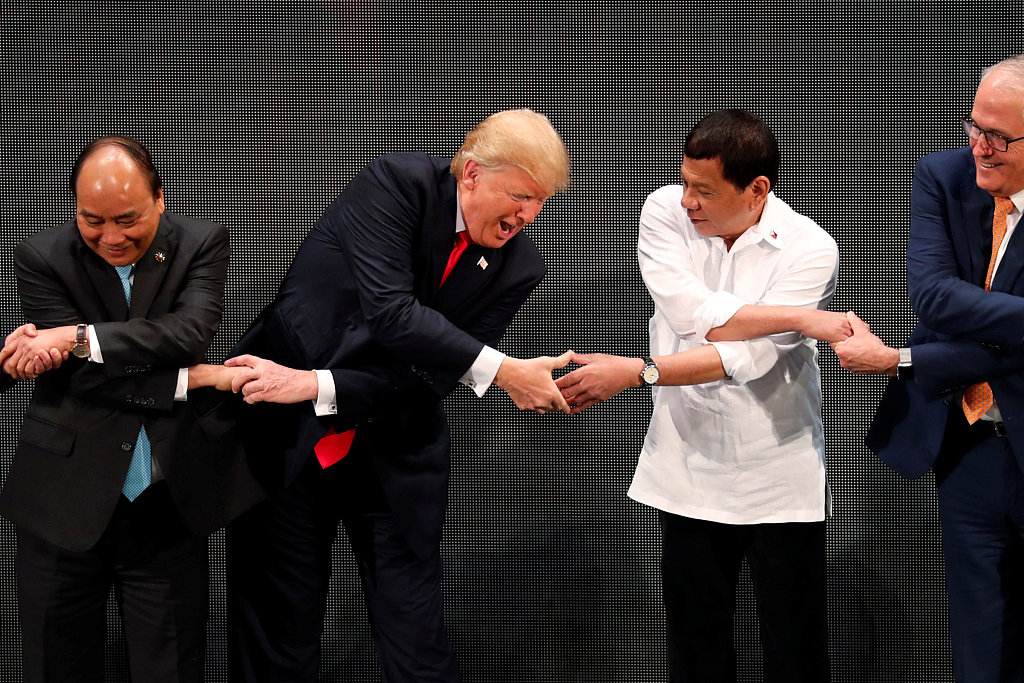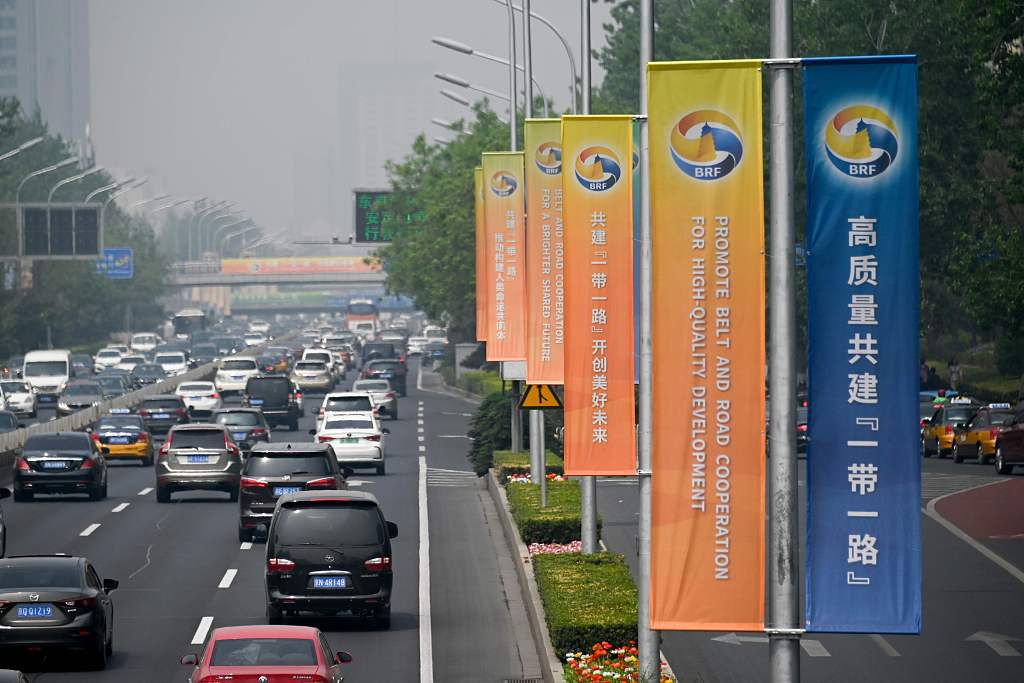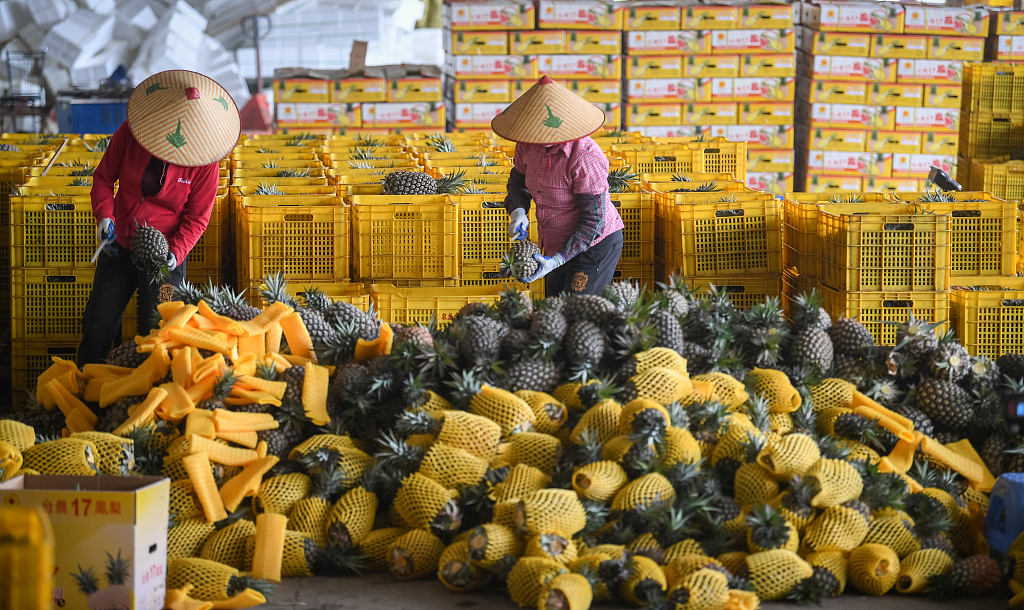
When you think of the Philippines today, you probably think of this man - President Rodrigo Duterte - who is set to visit China from August 28 to September 1, his fifth to China and the eighth time he meets Chinese President Xi Jinping.
Having upgraded bilateral ties to the level of comprehensive strategic cooperation during President Xi's state visit to the Philippines last year, both sides nodded to the long-term friendly relations. So, what will Duterte's trip this time bring to the bilateral ties?

Maritime cooperation
Since previous trips to China, Duterte showed his openness to join forces with China in the South China Sea, committing to address disputes and improve relations with China through dialogue and negotiations.
Although the issues related to the region are not the sum total of China-Philippines relations, there are ongoing tensions.

From left to right: Vietnam's Prime Minister Nguyen Xuan Phuc, U.S. President Donald Trump, Philippine President Rodrigo Duterte and then Australia's Prime Minister Malcolm Turnbull participate in the opening ceremony of the ASEAN summit in Manila, the Philippines, November 13, 2017. /VCG Photo
According to the Philippine defense secretary, it's highly unlikely his country will allow the U.S. military to use it as a springboard for freedom of navigation patrols in the South China sea.
Sending warships and military aircraft to the South China Sea region, the U.S. side flexed muscles in the name of "freedom of navigation".
Ironically, tens of thousands of ships travel through the South China Sea every year with no security problems.
While China's approach to handling the situation in the South China Sea has always been rooted in achieving win-win outcomes through dialogues with related parties on an equal footing.

Banners are displayed along a street ahead of the Belt and Road Forum in Beijing, April 22, 2019. /VCG Photo
BRI cooperation
When Duterte first met Xi, the latter hailed a "golden period" in relations between the two countries, Adam Garrie, director of the UK-based global policy and analysis think tank Eurasia Future, told CGTN.
Today, due to Duterte's commitment to non-aligned win-win relations with multiple foreign partners, the Philippines and China are undergoing a renaissance in bilateral relations that was the most immediate of many positive outcomes stemming from Duterte's attendance of the second Belt and Road Forum for International Cooperation (BRF) in Beijing this April, Garrie added.
On Belt and Road Initiative (BRI) cooperation, China always aims at enhancing all-around connectivity through infrastructure construction, exploring new driving force for the world economic growth, and building a new platform for world economic cooperation.

Filipino children receive gifts during celebration marking the 44th anniversary of diplomatic ties between China and the Philippines in Manila, June 8, 2019. /VCG Photo
As an important developing country with great potentials, the Philippines is a natural partner in joining building BRI.
Indeed, some Chinese-funded infrastructure projects have already started in the Philippines.
The construction of the two bridges over Pasig River in Manila and the Chico River Pump Irrigation Projects in the northern Philippines are in full swing.
The New Centennial Water Source-Kaliwa Dam project and the Philippine National Railway South Long Haul are being pushed forward at a steady pace.
China's efforts

Workers pack pineapples in Sanya, south China's Hainan Province, February 24, 2019. /VCG Photo
Earlier, China expressed its commitment to import more high-quality agricultural products including tropical fruits from the Philippines through expeditious completion of the accreditation process to enhance two-way trade balance.
Apart from cooperation in agriculture, the two sides have also speed up the implementation of the China-Philippines Industrial Park Development Program, which was signed during Xi's last visit.
China firmly supports the Philippine government's efforts in fighting against illicit drugs and drug-related crimes, and would like to strengthen cooperation in areas including combating the smuggling of illegal drugs and their precursor chemicals, intelligence sharing, joint investigation and operation as well as drug rehabilitation.

Copyright © 2018 CGTN. Beijing ICP prepared NO.16065310-3
Copyright © 2018 CGTN. Beijing ICP prepared NO.16065310-3